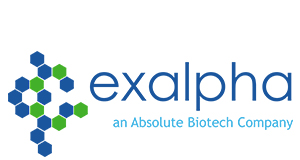Sheep anti Human bcl-xl
Sheep anti Human bcl-xl, Polyclonal, IgG
Artikelnummer
EXAA110P
Verpackungseinheit
100 µg
Hersteller
Exalpha Biologicals Inc
Verfügbarkeit:
wird geladen...
Preis wird geladen...
Background: bcl-x is a bcl-2-related gene that can function as a regulator of programmed cell death (apoptosis) independent of bcl-2. Alternative splicing results in two distinct bcl-x mRNAs. The larger mRNA gives rise to a protein product, bcl-xl, which is similar in size and predicted structure to bcl-2 (1). The smaller mRNA gives rise to bcl-xS. bcl-x immunoreactivity has been detected in a wide variety of cell types and the protein is typically present in the cytosol in association with the mitochondrial periphery, a property shared with bcl-2 however membrane bound forms of bcl-x have been demonstrated in thymocytes (2-4). Following the induction of apoptosis all of the bcl-x protein shifts to the membrane form (2). Of the two isoforms of bcl-x, the long (bcl-xl) is the most abundant mRNA species expressed in embryonic and adult tissues and most likely differs from bcl-2 in its regulatory activity on cell differentiation through controlled tissue specific expression (1,3). Like its homolog bcl-2, bcl-x undergoes phosphorylation, a modification that requires that a specific 60 amino acid loop region be intact, which in turn appears to regulate activity (5,6). Structurally, based on 3D-structure analysis, bcl-x forms pH sensitive cation-selective ion channels in membranes a property shared with the pore forming domains of several bacterial toxins (7). Bcl-xl has been shown to modify the cellÕs response to oxidants, to participate in resistance to chemotherapeutic agents and radiation, and to play a key role in the development of the developing CNS (8-10).
Immunogen: A synthetic peptide corresponding to amino acids 3 to 14 of the human bcl-xl sequence
Purification Method: Ammonium Sulfate Precipitation
Concentration: See vial for concentration
Formulation: Provided as solution in phosphate buffered saline with 0.08% sodium azide
References: 1. Boise L.H., et al. (1993) Cell 74: 597-608. 2. Krajewski S., et al. (1994) Cancer Res 54:5501-5507. 3. Gonzalez-Garcia M., et al. (1994) Development 120: 3033-3042. 4. Hsu, Y.T., et al. (1997) Proc. Natl. Acad. Sci USA 94: 3668-3672. 5. Benito, A., et al. (1997) Leukemia 11 940-944. 6. Chang, B.S., et al. (1997) EMBO J. 16: 968-977. 7. Minn, A.J., et al. (1997) Nature 385: 353-357. 8. Fang W., et al. (1995) J Immunol 155: 66-75. 9. Datta R., et al. (1995) Cell Growth Differ 6:363-370. 10. Shindler, K.S., et al. (1997) J. Neurosci. 17:3112-3119.
UniProt: Q07817 (Human)
Caution: This product is intended FOR RESEARCH USE ONLY, and FOR TESTS IN VITRO, not for use in diagnostic or therapeutic procedures involving humans or animals.
Immunogen: A synthetic peptide corresponding to amino acids 3 to 14 of the human bcl-xl sequence
Purification Method: Ammonium Sulfate Precipitation
Concentration: See vial for concentration
Formulation: Provided as solution in phosphate buffered saline with 0.08% sodium azide
References: 1. Boise L.H., et al. (1993) Cell 74: 597-608. 2. Krajewski S., et al. (1994) Cancer Res 54:5501-5507. 3. Gonzalez-Garcia M., et al. (1994) Development 120: 3033-3042. 4. Hsu, Y.T., et al. (1997) Proc. Natl. Acad. Sci USA 94: 3668-3672. 5. Benito, A., et al. (1997) Leukemia 11 940-944. 6. Chang, B.S., et al. (1997) EMBO J. 16: 968-977. 7. Minn, A.J., et al. (1997) Nature 385: 353-357. 8. Fang W., et al. (1995) J Immunol 155: 66-75. 9. Datta R., et al. (1995) Cell Growth Differ 6:363-370. 10. Shindler, K.S., et al. (1997) J. Neurosci. 17:3112-3119.
UniProt: Q07817 (Human)
Caution: This product is intended FOR RESEARCH USE ONLY, and FOR TESTS IN VITRO, not for use in diagnostic or therapeutic procedures involving humans or animals.
| Artikelnummer | EXAA110P |
|---|---|
| Hersteller | Exalpha Biologicals Inc |
| Hersteller Artikelnummer | A110P |
| Verpackungseinheit | 100 µg |
| Mengeneinheit | STK |
| Reaktivität | Human |
| Klonalität | Polyclonal |
| Methode | Western Blotting |
| Isotyp | IgG |
| Wirt | Sheep |
| Konjugat | Unconjugated |
| Produktinformation (PDF) | Download |
| MSDS (PDF) | Download |

 English
English






